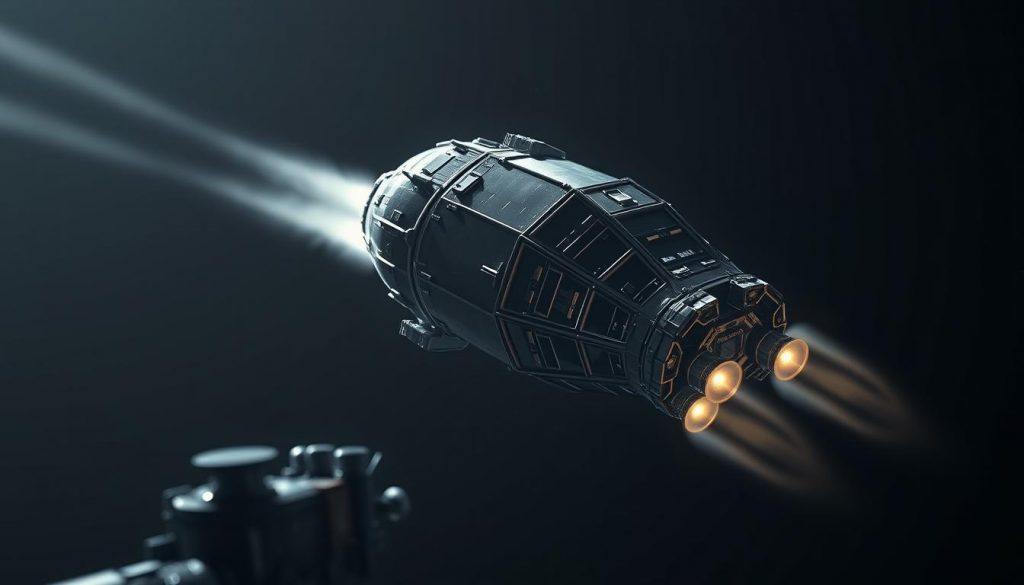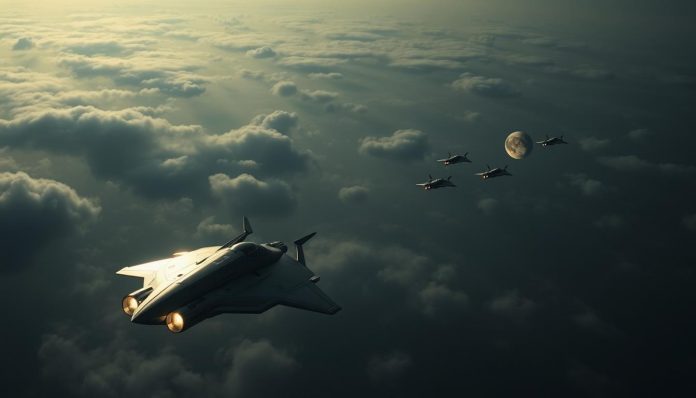Nearly a decade before a possible impact, an inch nudge could be enough to avert disaster — that is the scale now being tested by a new kinetic redirection plan.
The operation aims to use two spacecraft: an observer to measure change and an impactor to deliver a precise strike. Scientists will combine space and ground imaging to track orbital shifts of a few centimetres and to analyse ejecta and surface effects, contributing to our strategy for planetary defense against near-earth asteroids.
This mission is scheduled around 2030 at roughly 10 million kilometres from the world, backed by telescope networks and large radar arrays to improve detection and rapid response for asteroid defense. It follows a 2022 kinetic test and positions the country as a near-peer in this field.
Readers can explore the original coverage and technical context via a detailed report on the dual-spacecraft plan.
Key Takeaways
- Inch-scale deflection is being tested to validate physics, not to execute a large diversion.
- Two-spacecraft architecture pairs an observer with an impactor for robust measurement.
- The test window is around 2030, with impact at ~10 million kilometres from the planet.
- Parallel investments include telescope networks and a radar array for early warning and tracking.
- Openness to data sharing signals that asteroid defence is a global responsibility.
Latest UK space news: the future-facing brief on China’s kinetic asteroid test
UK readers are watching a new two-craft test that could redefine how nations respond to orbital threats in the realm of space exploration. The announcement blends practical engineering with broader planetary defence goals and will feature heavily in the latest technology articles and space news cycles focused on asteroid defense.
What’s new: an inch-scale deflection mission poised to shape planetary defence
At the Tiandu International Conference, Wu Weiren outlined a plan with two spacecraft: an observer to survey the target and an impactor to deliver a precise strike. Combined space-ground imaging and astrometry will aim to detect a 3–5 cm orbital change at roughly 10 million kilometres.
“The test uses high-resolution imaging and coordinated telescopes to produce reliable data for global analysis.”
For the UK, the significance is practical. The project links observatories and a 25-unit radar array to deepen detection and tracking. That infrastructure could inform how British teams benchmark instrument performance, data pipelines, and navigation autonomy.
- Timing: indicative launch around 2030, with pre-launch rehearsals tracking in UK coverage.
- Evidence plan: imaging, precise astrometry, and ground cross-checks to validate outcomes.
- Collaboration: openness to data sharing could invite UK universities and SMEs to contribute analytics and payload work.
China’s Asteroid Mission – Can One Inch Save Earth?: design, data, and deflection goals
A carefully timed, small momentum transfer can alter an object’s path enough to avoid a future collision. The plan tests whether a centimetre-scale Δv, applied years earlier, turns into a large miss distance via orbital mechanics.
The “One Inch” principle explained
Physics shows that a small velocity change compounds over time. A 3–5 cm shift in semi-major axis, measured precisely, can move a near-term encounter by thousands of kilometres when modelled correctly.

Why two spacecraft?
An impactor delivers momentum while an observer performs pre- and post-impact characterisation. The fly-along, impact, fly-along profile enables continuous imaging and radiometric tracking to isolate the effect.
Combined imaging and headline parameters
Space- and ground-based imaging plus radar arrays will refine orbit solutions and ejecta reconstructions. The target shift is 3–5 cm at roughly 10 million kilometres, with timing around 2030.
The major challenges
- Unknown surface cohesion and boulder fields that alter momentum transfer.
- Separating impact signals from solar radiation pressure and Yarkovsky effects.
- High-precision navigation and real-time data fusion to prove effectiveness.
“Statistically significant orbit change beyond measurement error will determine success.”
| Parameter | Planned Value | Measured Outputs |
|---|---|---|
| Target shift | 3–5 cm | Semi-major axis change, orbit propagation |
| Distance at impact | ~10 million km | Ejecta velocity, crater morphology |
| Support systems | Optical observatories & 25-unit radar | Improved orbital solutions, plume reconstruction |
Readers seeking deeper reportage and technical context can consult a detailed overview on near-Earth asteroids and planetary defense.
Asteroid defence is a global responsibility: cooperation, capabilities, and UK tech industry trends
Global coordination will determine whether small-scale deflection tests translate into reliable defense capabilities. Open data and joint observing campaigns turn single experiments into shared learning, aligning with the latest technology news in asteroid defense. This approach helps reduce uncertainty when assessing potential asteroid threats, achieving the goal of improved safety.
International cooperation is already practical: invitations for data sharing, payload integration, and joint monitoring create clear avenues for partners. Optical facilities and compound-eye radar arrays extend early warning reach and strengthen tracking, enhancing our collective capabilities.

International collaboration and data sharing: building a joint planetary defence framework
Shared archives, common modelling tools, and multi-longitude telescope runs speed up validation of orbit solutions. Cross-validation of observations improves confidence in threat assessments.
“A robust system approach marries discovery, tracking, simulation, and in-orbit response.”
UK perspective: launch competitiveness, observation networks, and opportunities for researchers and industry
The UK can contribute via space data analytics, optical tracking, and radar calibration. SMEs benefit from ESA-linked projects and payload work that match current tech industry trends in autonomy and AI-based navigation.
- Opportunities: flight software, imaging pipelines, and sensor fusion for coordinated campaigns.
- Policy issues: data standards, interoperability, and ethical frameworks for deflection trials.
- Strategic value: fast launch capability and responsive delivery enhance national contribution to global defence efforts.
Conclusion: China’s Asteroid Mission – Can One Inch Save Earth?
This planned test aims to validate whether a tiny velocity change, applied well in advance, yields measurable orbit deviation. It focuses on a clear observer‑impactor approach, rigorous measurement, and open data sharing, emphasising repeatability in the realm of science and the latest space news.
Small, timely advances to a target’s path can protect the world if warning time is sufficient. The integrated system of ground assets and spacecraft will produce valuable data that improves the effectiveness of future defense and space exploration, serving as a crucial resource for our nation.
Remaining uncertainties — from regolith response to ejecta recoil — mean cooperation across scientists and technologies is vital. If successful, this mission will shape asteroid defense practice and offer the UK practical roles in software, autonomy, and analytics, as discussed in this article.
For the latest space news, please follow the link.


